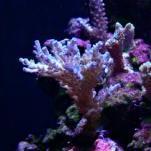-
Topics
-
Latest Update
-
0
monti spongodes, red digitata, sour apple birdnest
@ $10 @15 collect at Punggol road . take all at $50 -
0
WTS- easy sps, monti, mushroom and toadstool
M1-M2-M3 are mushrooms Red monti, bird nest, forest fire $10-30 per plug, just let me know your budget Buy any 3 get 1 more free. (4 for the price of 3) Also 2 pieces of purple monti with blue mouths $30 each Collection at Pasir Ris can PM me. -
1
WTG Still Working Tk1000 Teco Chiller
Reserved Sent from my SM-S928B using Tapatalk -
0
WTS - Premium Zoa - Stratosphere (cheapest you can find)
Very stable collector zoas - best pricing you can find. Big head variation - opens to 20cent coin size. A1 - 7polyp $450 A2 - 6polyp $400 A3 - 8polyp $500 A4 - 6 polyp $400 Thanks! PM me. Collection Pasir Ris. -
1
-





Recommended Posts
Join the conversation
You can post now and register later. If you have an account, sign in now to post with your account.